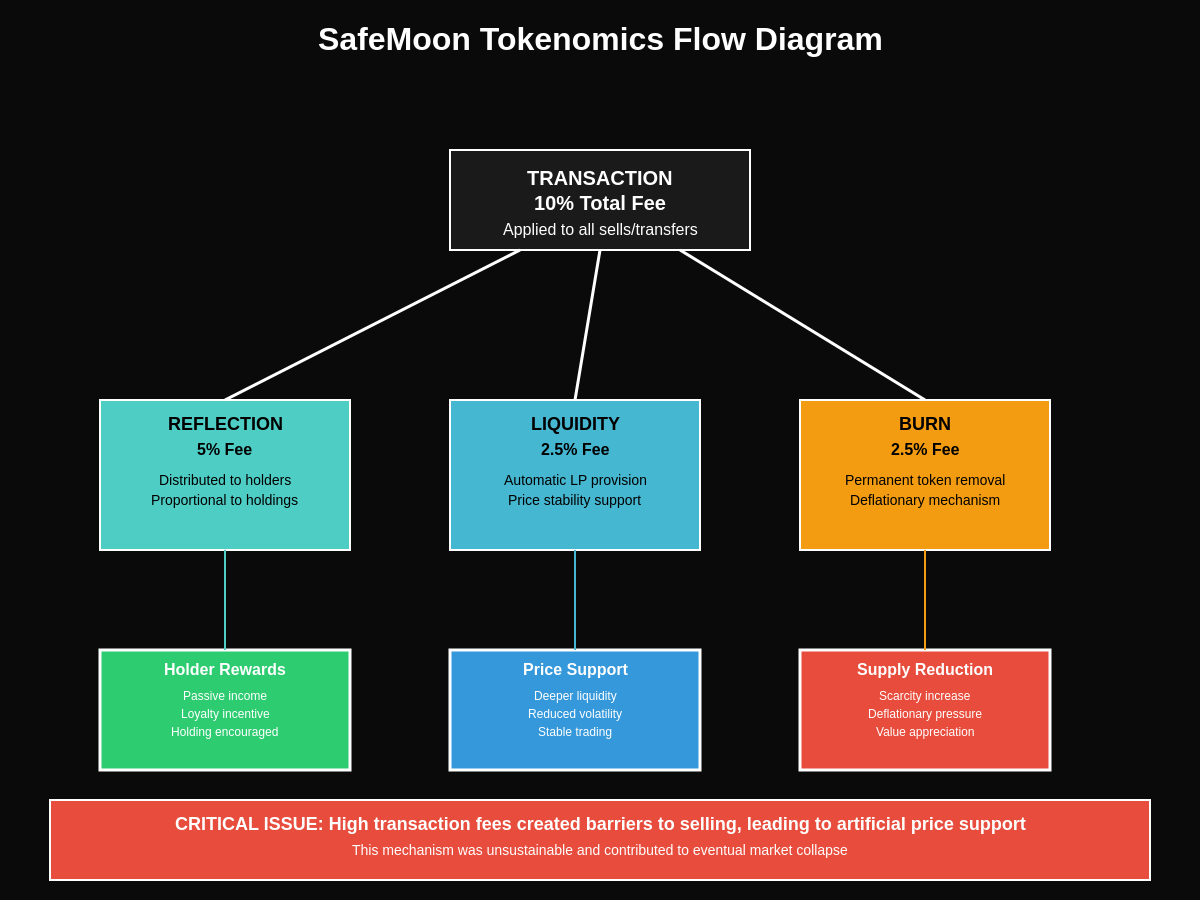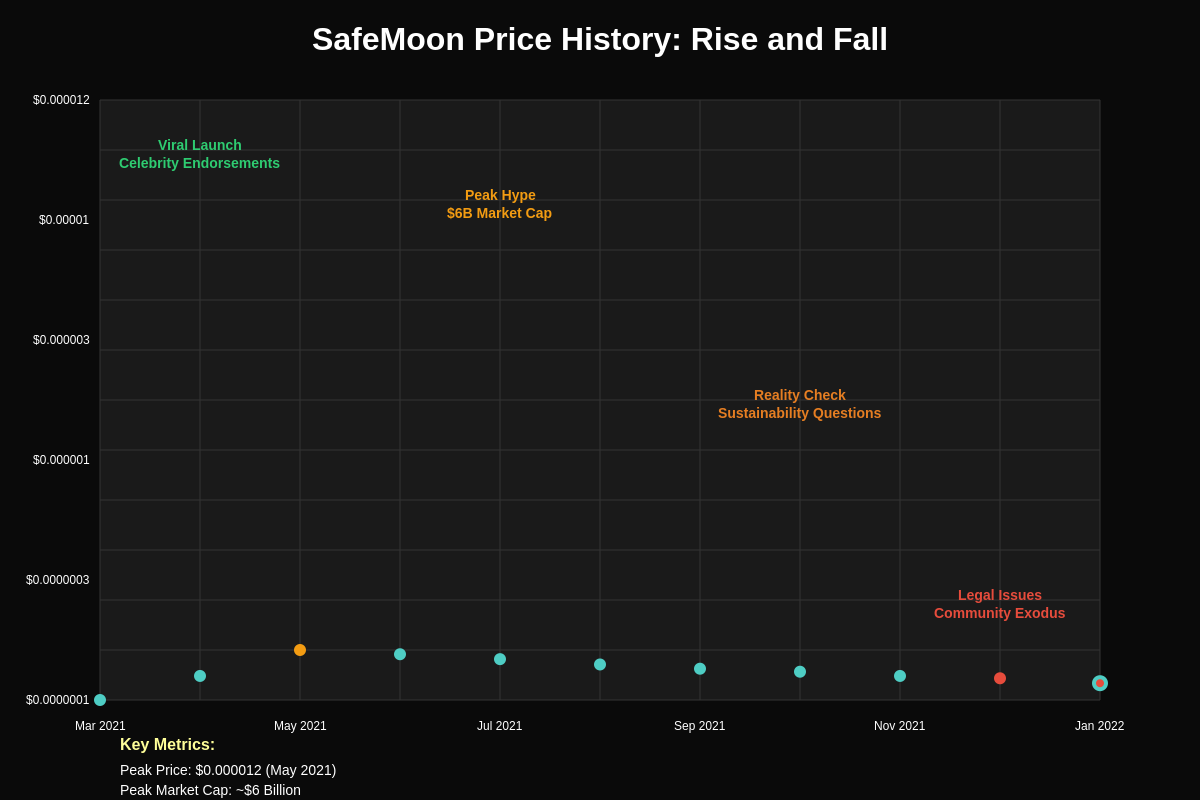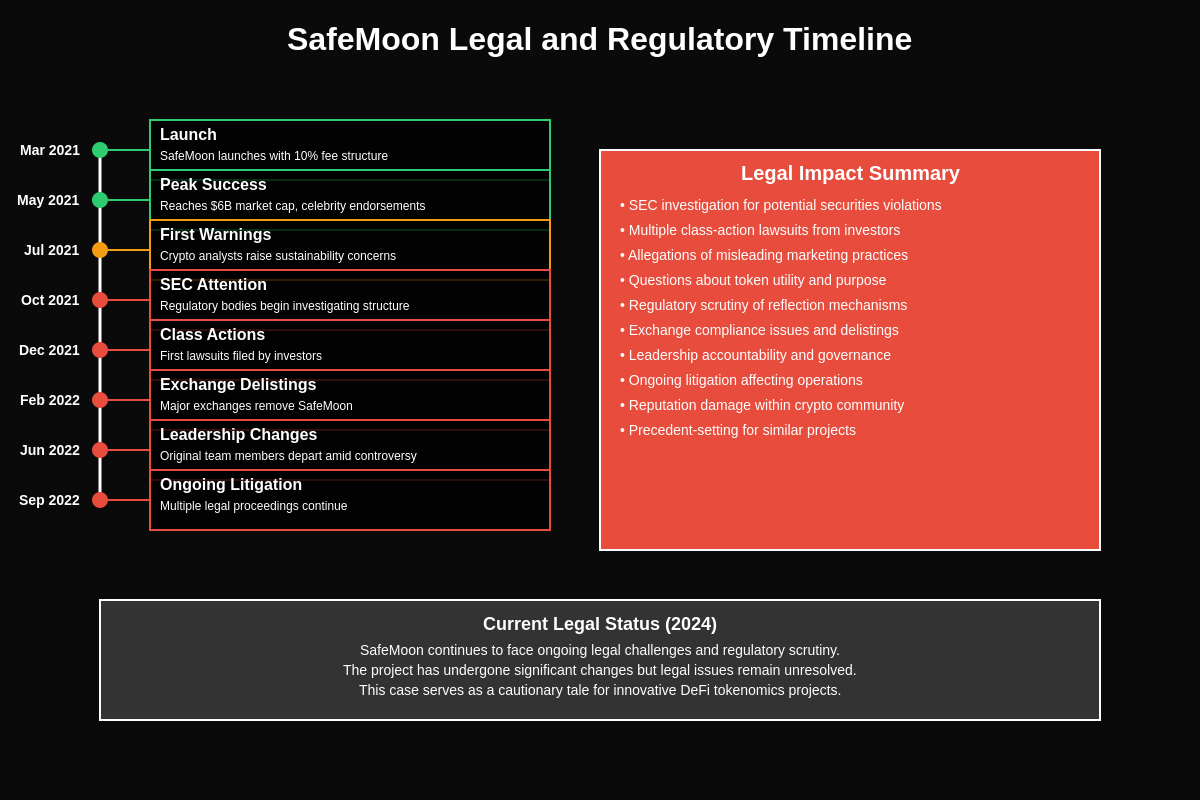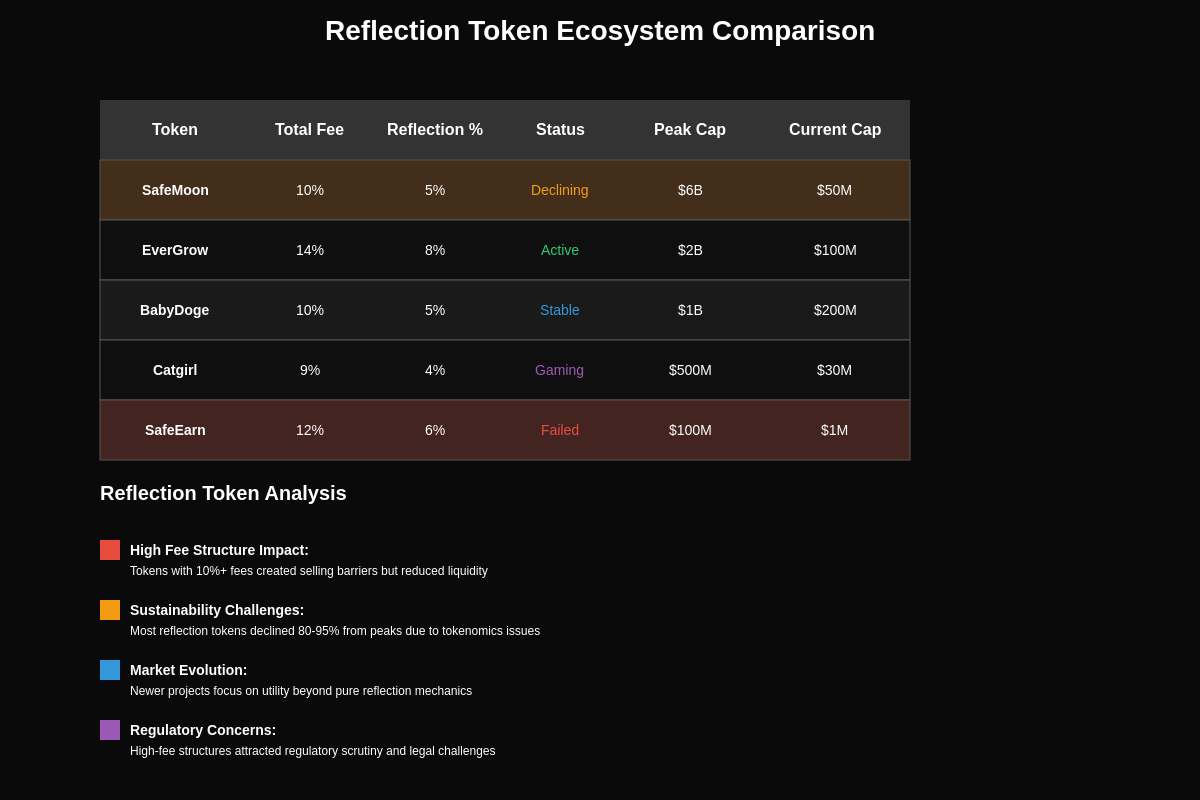The Birth of Revolutionary Tokenomics
SafeMoon emerged in March 2021 as one of the most controversial and influential cryptocurrency projects in the decentralized finance ecosystem, introducing tokenomics mechanisms that challenged conventional wisdom about cryptocurrency design while attracting millions of investors worldwide. The project’s innovative approach to token distribution, reflection rewards, and deflationary mechanics created a new category of cryptocurrency investment that would influence dozens of subsequent projects while ultimately serving as a cautionary tale about the complexities of sustainable tokenomics design. Track SafeMoon’s price history on TradingView to understand the dramatic volatility patterns that characterized its market performance.

The fundamental innovation that set SafeMoon apart from traditional cryptocurrencies was its implementation of a 10% transaction fee structure that penalized selling while rewarding holding, creating powerful incentives for long-term investment that attracted both retail enthusiasm and critical scrutiny from cryptocurrency analysts. This mechanism, combined with aggressive marketing and community building efforts, generated unprecedented interest in tokenomics experimentation while raising important questions about market manipulation, sustainable growth, and investor protection in decentralized financial systems.
The rapid rise of SafeMoon from obscurity to a peak market capitalization exceeding $6 billion in May 2021 demonstrated the powerful appeal of innovative tokenomics mechanisms while highlighting the risks associated with experimental financial instruments that lack proven track records or regulatory oversight. The project’s subsequent decline, marked by technical failures, legal challenges, and community fragmentation, provides valuable insights into the challenges of building sustainable cryptocurrency ecosystems based on complex economic incentive structures.
Technical Architecture and Smart Contract Design
SafeMoon’s technical implementation was built on the Binance Smart Chain, leveraging the lower transaction costs and faster confirmation times of BSC compared to Ethereum while maintaining compatibility with popular decentralized exchange platforms and wallet infrastructure. The smart contract architecture incorporated several novel features that distinguished it from traditional BEP-20 tokens, including automated liquidity provision, reflection mechanisms, and burn functionality that were designed to create sustainable value appreciation through mechanical price support.
The core tokenomics mechanism centered around a 10% transaction fee applied to all sales and transfers, with this fee split between three primary functions: reflection rewards distributed proportionally to existing holders, automatic liquidity provision to support trading stability, and token burning to reduce the overall supply and create deflationary pressure. This tripartite fee structure was designed to align incentives between early investors and long-term holders while creating mechanical barriers to speculative trading that could destabilize token price.
Analyze SafeMoon trading patterns to understand how the transaction fee mechanism affected trading behavior and market dynamics. The reflection mechanism automatically distributed a portion of transaction fees to all token holders proportional to their holdings, creating passive income streams that incentivized holding while penalizing active trading strategies that might create price volatility.
The automatic liquidity provision feature was implemented through smart contract functionality that allocated a portion of transaction fees to provide liquidity on decentralized exchanges, theoretically creating deeper markets and reduced price impact for large transactions. However, the implementation of this feature proved problematic in practice, as the automatic liquidity provision mechanism was susceptible to manipulation and created centralization risks that undermined the project’s decentralized governance aspirations.
The burn mechanism was designed to create deflationary pressure by permanently removing tokens from circulation through regular burning events and transaction-based burning, reducing the total supply over time and theoretically increasing the scarcity value of remaining tokens. This approach to supply management represented a significant departure from traditional cryptocurrency monetary policies that typically feature fixed or predictable inflation schedules.
Marketing Strategy and Community Development
SafeMoon’s marketing approach represented a masterclass in viral cryptocurrency promotion, leveraging social media platforms, influencer partnerships, and community-driven content creation to achieve unprecedented awareness and adoption within the cryptocurrency community. The project’s marketing strategy emphasized accessibility and inclusivity, positioning SafeMoon as an opportunity for ordinary investors to participate in cryptocurrency wealth creation through innovative tokenomics rather than technical innovation or institutional adoption.
The “SafeMoon Army” community became one of the most active and organized cryptocurrency communities, with members creating extensive content libraries, educational materials, and promotional campaigns that extended the project’s reach far beyond traditional cryptocurrency circles. This grassroots marketing approach proved extremely effective at generating awareness and driving adoption, with the community serving as both a marketing force and a source of feedback for project development.
Celebrity endorsements and influencer partnerships played crucial roles in SafeMoon’s rapid growth, with high-profile figures in entertainment, sports, and cryptocurrency providing social proof and legitimacy that attracted mainstream attention. However, these partnerships also created dependencies and vulnerabilities that would later contribute to the project’s challenges as celebrity interest waned and market conditions deteriorated.
The marketing messaging around SafeMoon emphasized themes of financial democratization, wealth redistribution, and community empowerment that resonated strongly with retail investors who felt excluded from traditional financial opportunities or early cryptocurrency investments. This positioning created strong emotional connections between investors and the project while potentially obscuring the technical and financial risks associated with experimental tokenomics mechanisms.
Initial Success and Market Performance
The early performance of SafeMoon exceeded even the most optimistic projections from supporters, with the token achieving gains of over 20,000% within the first two months of trading as demand from retail investors overwhelmed available supply and created powerful momentum effects. This extraordinary price appreciation attracted significant media attention and drove additional adoption as investors sought to participate in what appeared to be a revolutionary new approach to cryptocurrency investment.

The peak market capitalization of approximately $6 billion in May 2021 placed SafeMoon among the top 50 cryptocurrencies by market value, a remarkable achievement for a project that had launched just weeks earlier with no institutional backing or significant technological innovation. This success validated the appeal of innovative tokenomics mechanisms while raising questions about the sustainability of growth driven primarily by speculative enthusiasm rather than fundamental value creation.
Trading volume during SafeMoon’s peak periods reached extraordinary levels, with daily transaction volumes exceeding those of many established cryptocurrencies and creating significant fee generation for the project’s various mechanisms. The high transaction fees associated with SafeMoon trading meant that even modest price movements generated substantial rewards for holders while creating barriers for traders seeking to capitalize on short-term price fluctuations.
The reflection rewards mechanism distributed significant returns to early holders during periods of high trading activity, with some investors reporting passive income streams equivalent to traditional investment yields despite the high-risk nature of the underlying asset. These returns created powerful demonstration effects that attracted additional investors while creating unrealistic expectations about the sustainability of such reward levels.
Technical Challenges and Implementation Issues
Despite the initial success of SafeMoon’s tokenomics design, significant technical challenges emerged that highlighted the complexity of implementing novel economic mechanisms within blockchain-based systems. The automatic liquidity provision mechanism proved particularly problematic, with implementation issues leading to inefficient capital allocation and potential attack vectors that could be exploited by sophisticated traders or malicious actors.
The reflection mechanism, while conceptually appealing, created computational complexity that increased transaction costs and created scalability limitations as the number of holders grew. Gas optimization challenges meant that transactions became increasingly expensive during periods of high network congestion, potentially undermining the accessibility that was central to SafeMoon’s value proposition for retail investors.
Smart contract vulnerabilities emerged over time, including issues with the burn mechanism that could potentially be manipulated to create artificial scarcity or benefit specific holders at the expense of the broader community. These technical issues required ongoing updates and modifications to the smart contract code, creating uncertainty about the long-term stability and predictability of the tokenomics mechanisms.
The complexity of SafeMoon’s tokenomics also created challenges for integration with third-party platforms, including exchanges, wallet providers, and analytics services that were not designed to handle the unique characteristics of reflection tokens. These integration challenges limited the platforms and services available to SafeMoon holders while creating friction that potentially deterred adoption.
Regulatory Scrutiny and Legal Challenges
As SafeMoon’s popularity and market value grew, the project attracted increasing attention from regulatory authorities concerned about investor protection, securities compliance, and market manipulation in cryptocurrency markets. The innovative tokenomics mechanisms that distinguished SafeMoon from traditional cryptocurrencies also created regulatory uncertainty, as existing frameworks were not designed to address the unique characteristics of reflection tokens and deflationary mechanisms.

Securities regulators in multiple jurisdictions questioned whether SafeMoon’s structure and marketing might constitute an unregistered securities offering, particularly given the emphasis on passive income generation through reflection rewards and the centralized nature of key project decisions. These regulatory concerns created uncertainty about the project’s long-term viability and potentially limited institutional participation and mainstream adoption.
The transaction fee structure that was central to SafeMoon’s value proposition also raised questions about compliance with anti-money laundering regulations and tax reporting requirements, as the complex flow of funds through various mechanisms created challenges for tracking and reporting financial activities. These compliance complexities created additional costs and risks for both the project developers and individual investors.
Class action lawsuits emerged alleging various forms of misconduct related to SafeMoon’s marketing, tokenomics implementation, and project governance, creating legal liabilities that diverted resources from development activities while generating negative publicity that undermined community confidence. These legal challenges highlighted the importance of clear regulatory frameworks for innovative cryptocurrency projects while demonstrating the risks associated with experimental financial instruments.
Economic Sustainability and Long-term Viability
The long-term sustainability of SafeMoon’s tokenomics model faced significant challenges as the initial enthusiasm and speculative momentum that drove early growth began to wane and market conditions became more challenging. The reliance on continuous new investment to support the reflection rewards mechanism created characteristics similar to Ponzi schemes, where early investors benefited at the expense of later participants when growth slowed or reversed.
The deflationary mechanisms that were designed to create sustainable value appreciation proved insufficient to offset the negative effects of reduced trading activity and declining investor interest, as the benefits of token burning and supply reduction were overwhelmed by fundamental challenges related to utility, adoption, and market demand. The mechanical nature of these deflationary pressures also meant that they could not respond dynamically to changing market conditions or investor preferences.
Monitor SafeMoon’s decline to understand how tokenomics mechanisms performed during bear market conditions when speculative enthusiasm diminished. The transaction fee structure that initially attracted investors became a liability during declining markets, as the penalties for selling created negative feedback loops that accelerated price declines and reduced liquidity.
The concentration of tokens among early investors created additional sustainability challenges, as large holders had disproportionate influence over market dynamics and could potentially manipulate prices through coordinated buying or selling activities. This concentration also meant that the benefits of reflection rewards were unevenly distributed, potentially creating resentment and fragmentation within the community.
Competition and Market Saturation
The success of SafeMoon inspired numerous copycat projects that attempted to replicate its tokenomics mechanisms while addressing some of the perceived weaknesses or limitations of the original implementation. This proliferation of reflection tokens created a highly competitive environment where projects competed for investor attention and capital allocation within a finite pool of speculative cryptocurrency investment.

Many subsequent projects claimed to offer improved versions of SafeMoon’s tokenomics, including enhanced utility, better technical implementation, or more attractive reward structures, creating pressure on SafeMoon to innovate and differentiate itself to maintain market position. This competitive pressure highlighted the challenges of building sustainable competitive advantages around tokenomics mechanisms that could be easily copied or modified by competitors.
The market saturation of reflection tokens also created investor fatigue, as the novelty of innovative tokenomics mechanisms diminished and investors became more sophisticated in evaluating the sustainability and long-term viability of such projects. This evolution in investor preferences reduced the appeal of tokenomics innovation alone as a differentiating factor and increased the importance of fundamental utility and adoption.
The emergence of more sophisticated DeFi protocols and cryptocurrency investment opportunities also created alternatives that offered similar or superior risk-adjusted returns without the complexity and uncertainty associated with experimental tokenomics mechanisms. This competitive pressure from traditional DeFi protocols and established cryptocurrencies reduced the relative attractiveness of SafeMoon and similar projects.
Community Fragmentation and Governance Issues
As SafeMoon’s market performance deteriorated and technical challenges mounted, the previously unified community began to fragment along various lines of disagreement about project direction, leadership accountability, and strategic priorities. The decentralized nature of the community that had been a strength during the growth phase became a liability during challenging periods, as conflicting opinions and interests made coordinated decision-making difficult.
Governance challenges emerged around key decisions related to tokenomics modifications, technical updates, and strategic partnerships, with different community factions advocating for incompatible approaches to addressing the project’s challenges. The lack of formal governance mechanisms meant that these disputes were often resolved through informal influence and social pressure rather than transparent and democratic processes.
Leadership changes and internal conflicts within the development team created additional uncertainty and instability that undermined investor confidence while reducing the project’s ability to execute on technical improvements or strategic initiatives. These governance issues highlighted the importance of clear organizational structures and decision-making processes for cryptocurrency projects, particularly during challenging market conditions.
The community fragmentation also affected marketing and promotional activities, as conflicting messages and priorities reduced the effectiveness of grassroots marketing efforts while creating negative publicity that further damaged the project’s reputation and market position. This decline in community cohesion became self-reinforcing, as reduced enthusiasm and engagement led to further fragmentation and exodus of committed supporters.
Lessons for DeFi Tokenomics Design
The SafeMoon experience provides valuable lessons for future DeFi tokenomics design, particularly regarding the importance of balancing innovation with sustainability and ensuring that incentive mechanisms create genuine value rather than merely redistributing wealth among participants. The project’s rise and fall illustrate both the potential and the pitfalls of experimental economic mechanisms in cryptocurrency systems.
One key lesson is the importance of stress-testing tokenomics mechanisms under various market conditions, including bear markets, reduced trading activity, and declining investor interest, to ensure that incentive structures remain functional and beneficial when speculative enthusiasm wanes. The mechanical nature of SafeMoon’s tokenomics created inflexibility that proved problematic when market conditions changed dramatically.
The experience also highlights the critical importance of technical excellence in implementing complex tokenomics mechanisms, as implementation flaws and vulnerabilities can undermine even well-designed economic incentives while creating risks that may not become apparent until projects reach significant scale. The complexity of reflection tokens requires sophisticated technical expertise and rigorous testing to ensure reliable operation.
Regulatory compliance and legal clarity emerge as essential considerations for innovative tokenomics projects, as regulatory uncertainty and legal challenges can create existential risks that outweigh the benefits of tokenomics innovation. Future projects must carefully consider regulatory implications and ensure compliance with applicable securities and financial regulations.
Alternative Approaches and Evolution
The cryptocurrency industry has evolved significantly since SafeMoon’s peak, with new approaches to tokenomics design that attempt to address some of the sustainability and technical challenges identified in earlier reflection token experiments. These alternative approaches include more sophisticated governance mechanisms, improved technical implementations, and better integration with existing DeFi infrastructure.
Modern tokenomics design has shifted toward mechanisms that create genuine utility and value creation rather than purely redistributive mechanisms, with projects focusing on governance tokens, utility tokens for specific services, and incentive structures that align with long-term project development rather than short-term speculation. This evolution reflects lessons learned from projects like SafeMoon about the importance of sustainable value creation.
The development of more sophisticated DeFi protocols has also created opportunities for innovative tokenomics mechanisms that integrate with broader ecosystem functionality, including yield farming, liquidity provision, and governance participation that provide value beyond simple reflection rewards. These integrated approaches address some of the sustainability challenges associated with standalone tokenomics experiments.
Regulatory clarity and compliance frameworks have also evolved to provide better guidance for innovative cryptocurrency projects, reducing some of the regulatory uncertainty that contributed to SafeMoon’s challenges while establishing clearer boundaries for acceptable tokenomics innovation. This regulatory evolution provides a more stable foundation for future tokenomics experimentation.
Impact on the Broader Cryptocurrency Ecosystem
SafeMoon’s influence on the broader cryptocurrency ecosystem extends far beyond its direct market impact, affecting investor education, regulatory approaches, and project development strategies across the industry. The project’s rise and fall contributed to increased sophistication among cryptocurrency investors about the importance of evaluating tokenomics sustainability and technical implementation quality.
The regulatory attention generated by SafeMoon and similar projects accelerated the development of cryptocurrency-specific regulatory frameworks while highlighting the need for investor protection measures in experimental cryptocurrency markets. This regulatory evolution has created clearer guidelines for future projects while establishing precedents for enforcement actions against projects that fail to meet compliance standards.
The technical innovations pioneered by SafeMoon, despite their ultimate limitations, contributed to the broader development of DeFi infrastructure and tokenomics design principles that continue to influence new projects and protocols. The lessons learned from SafeMoon’s technical challenges have informed the development of more robust and scalable tokenomics implementations.
The marketing and community building approaches pioneered by SafeMoon have also influenced how cryptocurrency projects approach community development and viral marketing, with many subsequent projects adopting similar strategies while attempting to address the sustainability challenges that ultimately undermined SafeMoon’s long-term success.
Current Status and Future Prospects
As of 2024, SafeMoon has undergone significant changes including rebranding efforts, leadership transitions, and attempts to develop utility beyond the original tokenomics mechanisms that defined its early success. These efforts represent attempts to transition from a purely speculative asset to a more sustainable cryptocurrency project with genuine utility and value creation mechanisms.
The development of SafeMoon’s blockchain and ecosystem expansion efforts reflect recognition that tokenomics innovation alone is insufficient for long-term success in competitive cryptocurrency markets. These developments attempt to address some of the fundamental challenges that contributed to the project’s decline while building on the community and brand recognition that remain from its peak popularity.
However, the project continues to face significant challenges including legal liabilities, regulatory scrutiny, and community skepticism that limit its ability to regain market confidence and achieve sustainable growth. The legacy of the original tokenomics experiment continues to influence perceptions and expectations in ways that may constrain future development options.
Current SafeMoon market data shows the long-term effects of the project’s challenges, with market capitalization remaining far below peak levels despite various development and marketing efforts. The project’s future prospects depend largely on its ability to successfully transition to sustainable business models while addressing the technical and regulatory challenges that contributed to its decline.
Risk Management and Investment Lessons
The SafeMoon experience provides important lessons for cryptocurrency investors about risk management, due diligence, and the evaluation of innovative projects that promise extraordinary returns through novel mechanisms. The project’s rise and fall illustrate the importance of understanding the sustainability and technical implementation of tokenomics mechanisms before making investment decisions.
Key risk factors that investors should evaluate in similar projects include the sustainability of reward mechanisms under various market conditions, the technical quality of smart contract implementations, regulatory compliance status, and the qualifications and track record of development teams. The complexity of innovative tokenomics mechanisms requires sophisticated evaluation that goes beyond superficial marketing claims.
Position sizing and risk management strategies for experimental cryptocurrency investments should account for the possibility of complete loss while balancing the potential for extraordinary returns. The extreme volatility and uncertain sustainability of projects like SafeMoon make them unsuitable for risk-averse investors or situations where capital preservation is prioritized over growth potential.
The importance of diversification and portfolio management becomes particularly critical when investing in experimental cryptocurrency projects, as the correlation between similar projects can increase dramatically during market stress while the lack of established valuation frameworks makes risk assessment particularly challenging.
Regulatory and Compliance Evolution
The regulatory treatment of SafeMoon and similar projects has evolved significantly since the project’s peak, with authorities developing more sophisticated approaches to evaluating and regulating innovative cryptocurrency projects that incorporate novel economic mechanisms. This regulatory evolution has created clearer guidelines for future projects while establishing enforcement precedents that shape industry development.
Securities regulators have developed more nuanced approaches to evaluating whether innovative tokenomics mechanisms constitute securities offerings, considering factors such as investor expectations, centralized control, and the economic substance of token distribution mechanisms. These developments provide better guidance for projects seeking to innovate within existing regulatory frameworks.
The tax treatment of reflection rewards and similar mechanisms has also evolved, with authorities developing guidance for reporting and calculating tax obligations related to automatic token distributions and complex tokenomics mechanisms. This regulatory clarity reduces compliance uncertainty while establishing standardized approaches for tax reporting.
International coordination among regulatory authorities has improved following experiences with projects like SafeMoon, creating more consistent approaches to cryptocurrency regulation while reducing regulatory arbitrage opportunities that could be exploited by projects seeking to avoid oversight.
The story of SafeMoon represents a pivotal moment in the evolution of cryptocurrency markets and DeFi innovation, demonstrating both the potential and the perils of experimental economic mechanisms in digital asset systems. While the project’s ultimate decline highlights the challenges of building sustainable cryptocurrency ecosystems based solely on innovative tokenomics, the lessons learned from its experience continue to influence project development, regulatory approaches, and investor education across the cryptocurrency industry.
The legacy of SafeMoon extends beyond its direct market impact to encompass broader questions about value creation, community organization, and the role of innovation in financial markets that remain relevant for current and future cryptocurrency development. Understanding the full implications of SafeMoon’s rise and fall requires appreciation for the complex interplay of technology, economics, psychology, and regulation that shapes cryptocurrency market dynamics.
The experience also illustrates the democratizing potential of blockchain technology to enable financial innovation while highlighting the importance of education, regulation, and responsible development in ensuring that such innovation benefits rather than harms participants in cryptocurrency markets. As the DeFi ecosystem continues evolving, the lessons learned from SafeMoon’s experiment will inform the development of more sophisticated and sustainable approaches to tokenomics design and implementation.
Disclaimer
This article is for informational and educational purposes only and should not be construed as financial advice. Cryptocurrency investments, particularly those involving experimental tokenomics mechanisms like SafeMoon, are highly speculative and volatile, carrying significant risk of loss including the potential for complete loss of invested capital. The extreme price movements and experimental nature of DeFi tokens make them unsuitable for many investors. Past performance does not guarantee future results, and the value of cryptocurrency investments can fluctuate dramatically based on market sentiment, regulatory changes, technical issues, and other factors beyond investor control. The complex tokenomics mechanisms discussed in this article may not be suitable for all investors and require sophisticated understanding of blockchain technology and financial markets. Readers should conduct their own research and consult with qualified financial advisors before making any investment decisions. The author and publisher are not responsible for any financial losses that may result from investment decisions based on the information contained in this article. Cryptocurrency markets are largely unregulated and may be subject to manipulation, fraud, and other risks not present in traditional financial markets.